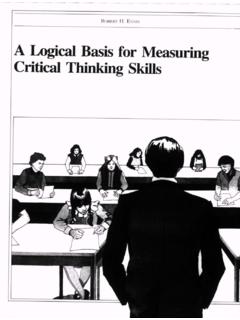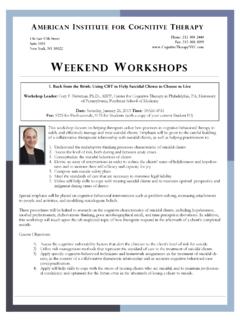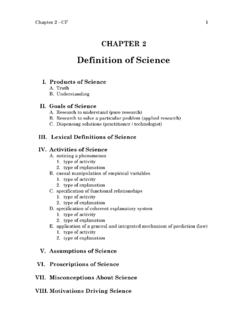Transcription of CASE CONCEPTUALIZATION AND TREATMENT PLANNING
1 case CONCEPTUALIZATION AND TREATMENT PLANNINGP resented byPatricia Robey and Mike FulkersonWGI-US 2015 ConferenceLas Vegas, Nevada1 What is case CONCEPTUALIZATION ?A case CONCEPTUALIZATION is a report that is based on information gathered, organized, and assessed to provide an explanation of a client s look for emotional, stated, non-verbal, and behavioral information that will help to develop a picture of the client s experience and will lead to collaboration with the client on goals for of case Conceptualization1. Listen to the client s story/presenting problem2. Gather information about how the client perceives his/her world3. Obtain demographic information4. Explore social, historical, and cultural context5. Assess client s strengths, coping skills6. Assess for risk; create problem list7. Diagnose8. Apply theoretical orientation and hypothesize about the nature of the problem9. Develop goals10.
2 Plan interventions3 Theoretical HypothesisApply theory to information gathered in initial interview How does the counselor understand the client? What patterns of thinking, actions, and feelings need to be addressed? How does theory inform goals for counseling?4 Choice Theory case CONCEPTUALIZATION Enduring issues are related to relationship problems Clients are internally motivated to meet 5 basic needs: Power, Love and belonging, Freedom, Fun, and Survival. Needs are met through very specific people, places, things , beliefs, in what is called the client s Quality World pictures. Total behavior consists of 4 components; acting, thinking, feeling, and physiology. If we change our actions and thinking, we change feelings and physiology. Behaviors are learned, chosen, and may be effective or ineffective. Behavior is purposeful and is the client s effort to satisfy basic TREATMENT PLANNING Based on the Medical Model and/or External Control Psychology Diagnosis is viewed as the cause of the client s presenting problem(s) Diagnosis is the central guidance mechanism in development of the TREATMENT plan Goals and objectives are based on treating mental illness and are often negatively-stated Interventions are focused on correcting or treating deficits The mental health practitioners is considered the expert in developing the TREATMENT plan Based on the DSM(Fulkerson, 2015)6 REALITY THERAPY TREATMENT PLANNING Based on a Public Health Model and Choice Theory Diagnosis is viewed as a description of the symptoms of the presenting problem(s)
3 Basic Needs and Quality World Pictures are used as diagnostic schema and the central guidance mechanism in TREATMENT plan development Goals and objectives are based on building psychological strength and positively-stated Interventions are focused on building psychological strength The client is viewed as the expert in developing the TREATMENT plan Can be integrated with the DSM(Fulkerson, 2015)7 TREATMENT PLANNING DEFINITIONS FROM A REALITY THERAPY PERSPECTIVE Targeted Behaviors: The actions which will be monitored during TREATMENT . Baseline: Response measure prior to or at the beginning of TREATMENT . Goal: A goal is what the client expects to accomplish by the end of therapy. It is written in terms of what the client will do.(Fulkerson, 2015)8 TREATMENT PLANNING DEFINITIONS FROM A REALITY THERAPY PERSPECTIVE Objective: A necessary step in the process to achieve a goal which is written in terms of what the client will do.
4 Just like we fulfill our needs through quality world pictures, we achieve our goals through our objectives. Intervention: Methods/techniques the mental health practitioner will use to assist the client.(Fulkerson, 2015)9 CHARACTERISTICS OF EFFECTIVE TREATMENT OUTCOME MEASURESSMART goals Simple/Specific Measurable Attainable/Achievable Realistic/Results Oriented Time limited10 BEHAVIOR MANAGEMENT PLANA = Antecedents:B = Behaviors:C = Consequences:D = Determine the quality world picture tied to the behavior:E = Evaluate the effectiveness of past interventions:F = Find more effective interventions:G = Assist the client in setting a newGoal:(Fulkerson, 2015)11 References Fulkerson, M. H. (2015). TREATMENT PLANNING from a reality therapy perspective. Bloomington, IN: iUniverse. Glasser, W. (1998). Choice Theory. New York: Harper Collins. For further reading: Eells, T. D. (2015). Psychotherapy case formulation.
5 American Psychological Association. 12







